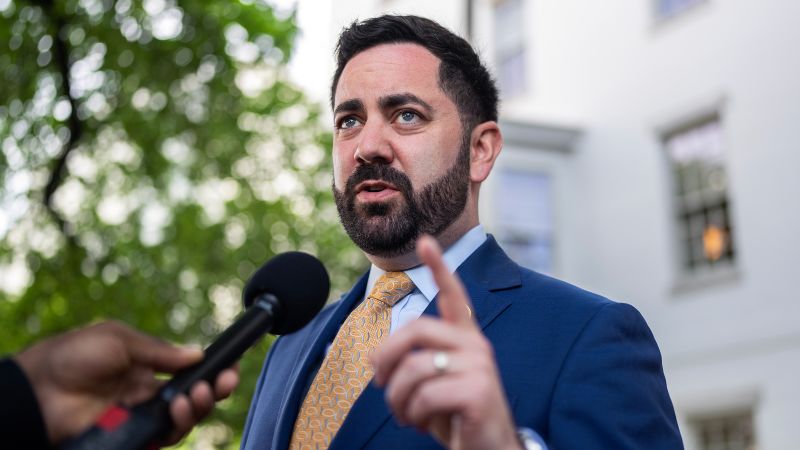By Dom Luszczyszyn, Sean Gentille and Shayna Goldman
Here we go again. For the third time in the Auston Matthews and Mitch Marner era, the Toronto Maple Leafs will face the Boston Bruins in Round 1. Maybe the third time’s the charm for Toronto.
Maybe this time will, in fact, be different, especially after the Leafs slayed their first-round demons last spring. Maybe things will go the way they always do against the Bruins.
Either way, it should make for the most entertaining series of the opening round. Two bitter rivals with a deep history squaring off once more in what should be a very tight matchup headlined by stout defense in one corner and explosive offense in the other.
Does it get better than this?
The odds
It wouldn’t be a Bruins-Leafs showdown if it wasn’t painfully close for either side. The last two series went to seven. The one before the Matthews-Marner era went to seven as well. Chances are this one goes to seven, too. The odds of that happening are 32 percent, but let’s be honest — that feels low for these two clubs.
Close is the only way these two teams roll against each other: an epic coin-flip decided in the final game. As usual, that coin slightly leans in the Bruins’ favor though their edge is a lot smaller than it might’ve been earlier this season.
The Leafs played their best in the second half. The Bruins limped a bit after a strong first half. The end result is an incredible rivalry with little separating the two teams. May the best team win.
The numbers

Just three goals separate these two teams, but how they got there varies.
For the Leafs, offense leads the way. Toronto’s shot volume is 10th in the league at five-on-five, but the real strength is how the team drives to the quality areas of the ice. The Maple Leafs rely more on their forecheck and cycle game to create scoring chances, but that has helped them to sixth in the league with an expected goals rate of 2.88 per 60.
A key difference from last year is how the Leafs convert on those five-on-five chances, for a league-high three goals per 60 minutes of play. Those offensive highs extend to the power play, where the Maple Leafs’ loaded top unit is among the best in the league.
The Bruins aren’t a weak offensive team, what they lack in shot volume they make up for in quality with their shots primarily coming from that net-front area. But their advantage in this series stems from their back end.
Toronto and Boston are pretty closely matched in expected goals against and in how they limit their opponents’ rush attempts. The Bruins don’t allow much from the middle of the ice, but what really separates these two teams is goaltending.
The Bruins have one of the best goalie tandems, with essentially two starters at their disposal. At five-on-five, Boston has saved a collective 36 goals above expected, which is good for second in the league behind only the Jets. That contributes to their plus-31 Defensive Rating, which trumps Toronto’s plus-4, along with their short-handed play.
Boston allows fewer shots and scoring chances on the penalty kill than Toronto and tends to limit opponents from just ripping shots from the circles. Similar to even strength, the Bruins’ goalies are what really tilts this in their favor.
The big question
Do the Leafs have the right mix on the blue line?
The problem with having nine NHL-caliber defensemen is figuring out who’s in and who’s out. To start, it looks like the Leafs will go with the following:
Morgan Rielly — Ilya Lyubushkin (46% goals, 54% xG)
Simon Benoit — Jake McCabe (58% goals, 54% xG)
Joel Edmundson — Timothy Liljegren (77% goals, 50% xG)
That most notably leaves T.J. Brodie on the outside.
The question is whether that’s the optimal mix. It’s not as simple as plugging in the six best guys, it’s about finding the pairs that fit and the styles that mix. They can’t all be offensive-minded puck-movers, but there also shouldn’t be too many net-front specialists who struggle to move the puck. Finding balance and eliminating redundancies is key.
Off the top, the Leafs’ best pair from an expected goals percentage that played 100 minutes or more was Jake McCabe and Timothy Liljegren, who operated at a 62 percent clip. Both can move the puck well and fit well together. It also puts McCabe back on his strong side.
Toronto’s best pairs usually involve one of McCabe or Liljegren, so it makes sense that they work best together. It’s just a question of their optimal usage is together or separated — especially knowing how well McCabe has worked with Benoit. That’s in tougher minutes too, where Keefe may still not trust Liljegren.
McCabe-Benoit may not be worth splitting up, but the pair’s existence does create the redundancy of having Benoit, Lyubushkin and Edmundson in the lineup. The Leafs are probably a better team with only one or two as the trio isn’t particularly adept at moving the puck up and facilitating offense. That’s routinely been an issue in past playoffs for the Leafs and may be exacerbated by the current mix of talent.
That’s not to say it can’t work; it’s that it may not be the optimal way of handling the defensive log jam. It may mean the best course is scratching Edmundson or Lyubushkin, though that doesn’t seem likely given the Leafs added them at the deadline.
Then again, Brodie may not deserve a spot in the top six above them. Brodie is projected to be an improvement based on his resume, and his lesser numbers this season are partly a result of generally being fed the toughest minutes. But his ability to move the puck has plummeted and he hasn’t looked his best, even in lesser assignments. Through the first 49 games of the season (where he played exclusively with Rielly) his average Offensive Rating faced was 2.5. Since then it’s dropped to 1.6, and yet his play relative to teammates dropped significantly.
His decline is the biggest reason that there’s a back-end conundrum in the first place. It’s hard to say that the Leafs have the perfect mix, but it also doesn’t look like the best one includes Brodie. Maybe Conor Timmins will save them.
The X-factor
Will the Bruins rotate their goalies in the playoffs?
We probably won’t have an answer to this one until Game 2, but there’s one major reason to believe that the Bruins will continue alternating between Linus Ullmark and Jeremy Swayman: they only deviated from it four times during the regular season, most recently on Feb. 21. That was almost two months ago and more than two weeks before the NHL trade deadline. Boston owes a ton of its success to both goalies, and the timeshare situation seems to be embedded in their approach. Would you want to switch off a system that seems to work so well?
If they do alternate between the two, it’d be easy to view it as a plus for the Maple Leafs. Since the deadline, Ullmark (.935 save percentage, 8.69 Goals Saved Above Expected) has been markedly better than Swayman (.884 save percentage, 2.26 GSAx). The wrinkle, as noted by The Athletic’s Fluto Shinzawa, is that none of that came against the Maple Leafs; Swayman, back in the pre-deadline days, started Boston’s final two games against Toronto and played beautifully, allowing one goal in each, making 61 total stops and saving more than four goals above expected. For Boston, it’s a good problem to have, and for us, it’s a fascinating storyline to track.
The rosters

Whoever the Bruins have in net, one thing is clear — he’ll be a much more imposing force than his counterpart. That’s probably going to be Ilya Samsonov, whose bouts of inconsistency to start and finish the year don’t inspire much confidence.
The Leafs aren’t a strong enough defensive team to mask those deficiencies with the second-lowest Defensive Rating among playoff teams, ahead of only Washington. The playoff average is plus-21.
If the Leafs win, it’ll probably come from bringing the heat offensively.
The Big Four remain the biggest reason to believe the Leafs can go deep, as they continue to be one of the league’s strongest forward cores. Matthews is at the top of the list, as arguably one of the NHL’s top three players. He’s a Selke-caliber forward who scored 69 goals this season, an extremely rare talent who will dictate how far the Leafs go in any series.
What helps the Leafs’ chances is how well Tyler Bertuzzi and Max Domi have looked next to Matthews over the last few weeks, earning 66 percent of the expected goals. That allows the Leafs to spread the wealth in their top nine, creating some potential matchup nightmares for the Bruins. Marner paired with John Tavares is a proven combo that few teams can match on the second line. William Nylander on the third line is a luxury reminiscent of Phil Kessel’s best days with the Penguins.
That mix allows Toronto’s top three players to drive their own line. It’s also one afforded by the team’s improved offensive depth, giving the Leafs the balanced attack they’ve lacked during prior playoff failures.
All of it depends on Matthews, Marner, Nylander and Tavares rising to the occasion, but that’s easier said than done against a Boston team that serves as Toronto’s foil. The Bruins’ biggest strength is making it as difficult as possible to score and that remains the case even without Patrice Bergeron around this season.

A lot of that centers around Boston’s elite goaltending, though, as the team’s defensive backbone isn’t quite at the same level it once was.
Hampus Lindholm and Brandon Carlo form a terrific shutdown pair that nets one of the highest combined Defensive Ratings in the league. Charlie McAvoy continues to be one of the best two-way defenders, too, and he still earns great results with Matt Grzelcyk by his side. But what makes Boston vulnerable is that those results appear much more dependent on goaltending than on actual scoring chance prevention compared to last season. The team’s normally terrifying top four doesn’t look as remarkable as usual under the hood.
McAvoy has sacrificed a little bit at both ends of the ice and Lindholm’s game has regressed after a career year. Both are still strong players, but neither looks as effective as they did last season with both only earning 51 percent of the expected goals. That’s well below last year’s 55-to-57 percent.
The issue seemingly stems from what’s around them. A weaker forward corps, especially at center, is an issue, but it’s also their frequent partners dragging them down. Last season the Bruins had two reliable pairs that could tilt the ice heavily. This year those pairs are only marginally winning their minutes, and anytime Grzelcyk or Carlo are away from their safety net, they sink like a stone. Grzelcyk has a 40 percent expected goals rate away from McAvoy while Carlo drops to 44 percent without Lindholm. Last year they were able to at least hold their own.
Neither currently grades out as an above-average defenseman, putting a larger onus on McAvoy and Lindholm to carry their respective pairs. That’s going to be a tall order against a dangerous Toronto attack, a heavy burden that may put a lot of pressure on the team’s goaltending.
It’s strength against strength, which may dictate which way the series lands — and that’s also the case for both team’s weaknesses. Boston’s defense is just as scary as Toronto’s offense in a good way. Boston’s offense is just as scary as Toronto’s defense in a bad way. It’s what makes this such an even and compelling series.
David Pastrnak is one of the league’s best offensive weapons, and he had another season worthy of MVP shortlists. He can change any series on his own and that he scored as often as he did with such little help is seriously impressive. Like Matthews, he is elite enough to drive a potent top line next to anyone — in this case Pavel Zacha and Danton Heinen — which allows Boston to spread the wealth like Toronto.
Boston isn’t nearly as offensively wealthy as Toronto and that does pose a problem beyond Pastrnak. Brad Marchand, Charlie Coyle and Jake DeBrusk are good players, but as secondary scoring options, they don’t evoke a lot of fear. Boston is one of only four playoff teams whose second forward’s projected Net Rating falls below plus-10.
Together the trio have 61 percent of the goals, but that’s also heavily goaltending dependent — they’ve only scored 2.5 goals per 60 at five-on-five, the exact same as their expected goal rate. The third line is better than it’s given credit for and grades out well but doesn’t have the results to show yet.
The offensive outlook isn’t rosy, but it doesn’t have to be when facing a defensive outlook that is similarly sketchy on the other side. If the teams’ strengths end up evenly matched, the series may just come down to whichever team can limit its weaknesses best.
The key matchup
Auston Matthews vs. Charlie McAvoy
Matthews is the Maple Leafs’ best player. McAvoy is the Bruins’ No. 1 defenseman. They’re likely to see a lot of each other. The results are important.
And in the regular season, those results were comically lopsided. In more than 23 minutes with Matthews and McAvoy both on the ice at five-on-five, Toronto out-attempted the Bruins 40-10, outshot them 19-3, out-chanced them 25-2 (!) and won expected goals 2.48 to 0.3. The bright side for Boston is that the Leafs only scored once.
It’s hard to imagine those results continuing over a full series. McAvoy is a net positive (or close to it) in all those categories, and the sample is small. You almost have to assume that a player as good as McAvoy wouldn’t get caved in to that degree over more than a couple of games. If Matthews and Marner are split up, that’d change the circumstances enough to give it a shot.
Another possibility is that Boston keeps Lindholm to McAvoy’s left. Lindholm’s results against Matthews this season — nearly even on expected goals, less dramatically behind in everything else — have been better. The other option would be to get Matthews away from McAvoy entirely. Lindholm’s current partner, Carlo, has fared the best of the three.
The bottom line
If the Bruins win this series, you can assume how it’ll play out; Ullmark and/or Swayman will stand on their heads, and the skaters will score enough to get by. If the Maple Leafs win, it’ll be treated as another example of Matthews and company exorcizing their playoff demons — for at least a few more games.
References
How these projections work
Understanding projection uncertainty
Resources
Evolving Hockey
Natural Stat Trick
Hockey Reference
NHL
All Three Zones Tracking by Corey Sznajder
(Photo of Charlie McAvoy and Auston Matthews: Andrew Lahodynskyj / NHLI via Getty Images)

Christine Lake is a sports fanatic who lives and breathes athletics. With an extensive background in sports journalism, he covers everything from major league championships to grassroots sports events. When she’s not on the field or at the stadium, you’ll find Christine coaching youth sports teams.








